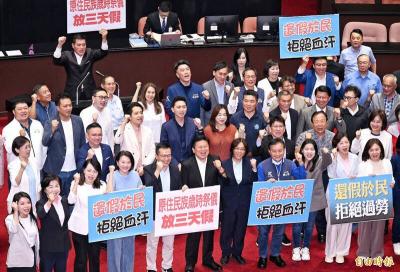Disinfection products that use ultraviolet light are increasingly popular amid the COVID-19 pandemic, but people should be aware of the product’s potential health risks, a doctor said on Friday.
Yen Chun-yu (顏俊宇), a pediatrician at Taipei Veterans General Hospital, wrote on Facebook that many people have asked him about devices emitting ultraviolet light with wavelengths of 100 to 280 nanometer to sanitize surfaces.
However, there is no scientific evidence that light in that wavelength bracket kills SARS-CoV-2, the virus that causes COVID-19, he said, adding that the light might damage the DNA of microorganisms, including bacteria, viruses and fungi.
The sun also emits those wavelengths, but they are mostly absorbed by the ozone layer in the Earth’s upper atmosphere, Yen said, adding that sunlight has no disinfecting qualities, as evidenced by sunnier countries hit hard by the pandemic.
Ultraviolet light with longer wavelengths, which can penetrate the atmosphere, can cause tanning, sunburn and even skin cancer, he said.
Light with a wavelength of about 254 nanometer is most commonly used for disinfection, Yen said, adding that this wavelength, applied at 15.54 milliwatts per cm2, can kill most bacteria within one minute.
Light with a wavelength of 207 to 222 nanometer has a less damaging effect on human skin and eyes, he said.
Disinfection lamps using those wavelengths might cause light damage to the skin and eyes, but seldom cause skin cancer or cataracts, Yen added.
Ultraviolet light cannot penetrate dust, soil or bodily fluids, while paper, glass or fog largely reduce its intensity, Yen said, adding that it has to be applied directly to a relatively even surface to kill microorganisms.
People should not apply the devices to their skin and not leave the room when the lamp is in use to disinfect surfaces, he said.
To achieve the best results, the lamps should be applied for 30 minutes to an hour, he said.
Ultraviolet light of shorter wavelengths is used to synthesize ozone, or trioxide, from oxygen, Yen said, adding that ozone can also be used for disinfection.
However, excessive exposure to the gas might cause respiratory conditions including asthma, he said, adding that exposure over eight hours to more than 0.1 parts per million ozone in an indoor setting is dangerous.
People should leave the room while applying a device that synthesizes ozone for disinfection, only use such devices in well-ventilated settings and only return to the room 30 minutes to an hour after the device has been switched off, Yen said.

The brilliant blue waters, thick foliage and bucolic atmosphere on this seemingly idyllic archipelago deep in the Pacific Ocean belie the key role it now plays in a titanic geopolitical struggle. Palau is again on the front line as China, and the US and its allies prepare their forces in an intensifying contest for control over the Asia-Pacific region. The democratic nation of just 17,000 people hosts US-controlled airstrips and soon-to-be-completed radar installations that the US military describes as “critical” to monitoring vast swathes of water and airspace. It is also a key piece of the second island chain, a string of

A magnitude 5.9 earthquake that struck about 33km off the coast of Hualien City was the "main shock" in a series of quakes in the area, with aftershocks expected over the next three days, the Central Weather Administration (CWA) said yesterday. Prior to the magnitude 5.9 quake shaking most of Taiwan at 6:53pm yesterday, six other earthquakes stronger than a magnitude of 4, starting with a magnitude 5.5 quake at 6:09pm, occurred in the area. CWA Seismological Center Director Wu Chien-fu (吳健富) confirmed that the quakes were all part of the same series and that the magnitude 5.5 temblor was

Taiwan will now have four additional national holidays after the Legislative Yuan passed an amendment today, which also made Labor Day a national holiday for all sectors. The Chinese Nationalist Party (KMT) and Taiwan People’s Party (TPP) used their majority in the Legislative Yuan to pass the amendment to the Act on Implementing Memorial Days and State Holidays (紀念日及節日實施辦法), which the parties jointly proposed, in its third and final reading today. The legislature passed the bill to amend the act, which is currently enforced administratively, raising it to the legal level. The new legislation recognizes Confucius’ birthday on Sept. 28, the

The Central Weather Administration has issued a heat alert for southeastern Taiwan, warning of temperatures as high as 36°C today, while alerting some coastal areas of strong winds later in the day. Kaohsiung’s Neimen District (內門) and Pingtung County’s Neipu Township (內埔) are under an orange heat alert, which warns of temperatures as high as 36°C for three consecutive days, the CWA said, citing southwest winds. The heat would also extend to Tainan’s Nansi (楠西) and Yujing (玉井) districts, as well as Pingtung’s Gaoshu (高樹), Yanpu (鹽埔) and Majia (瑪家) townships, it said, forecasting highs of up to 36°C in those areas